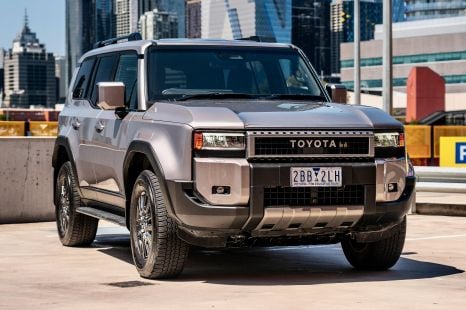

Max Davies
2025 Toyota Prado GXL review
2 Months Ago
If you want a Hyundai Palisade, you might as well do things properly. The best Palisade is the range-topper, the Highlander Diesel AWD.
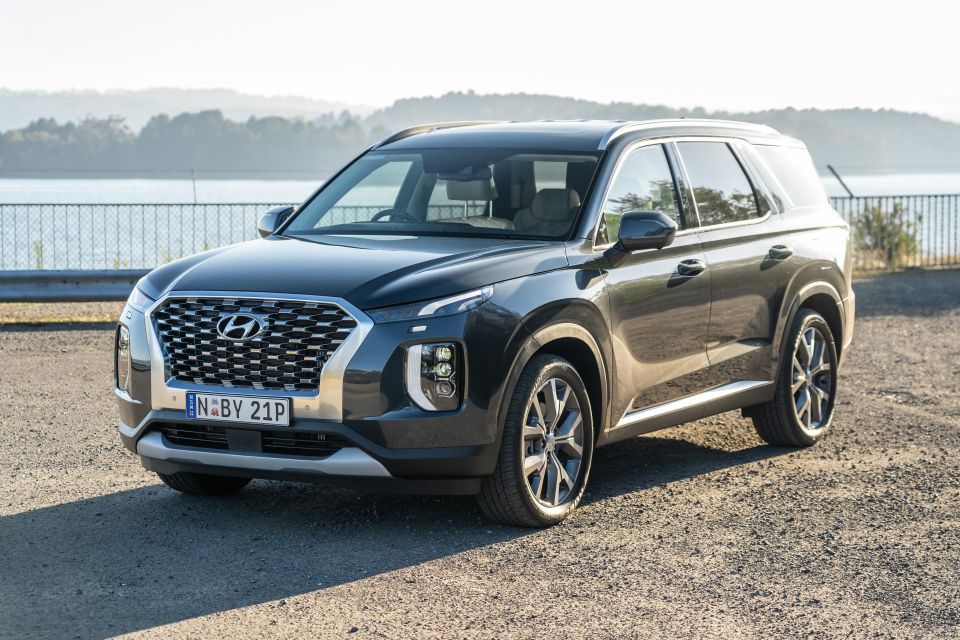
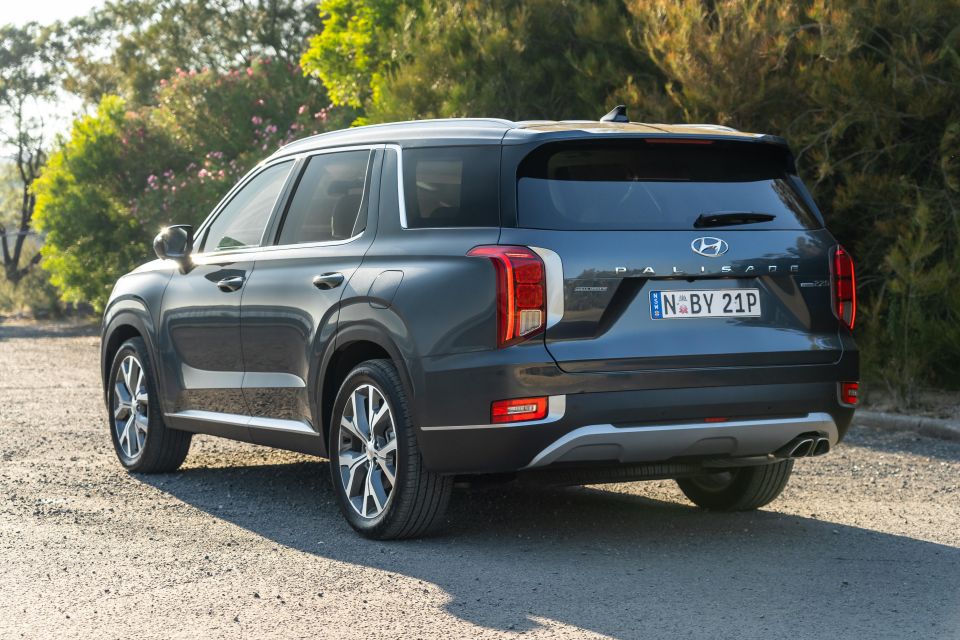

Contributor
New from
$60,000
excl. on-roads

Contributor
New from
$60,000
excl. on-roads


Contributor
New from
$60,000
excl. on-roads

Contributor
New from
$60,000
excl. on-roads
Quickly see how this car stacks up against its competition. Select any benchmark to see more details.
Where expert car reviews meet expert car buying – CarExpert gives you trusted advice, personalised service and real savings on your next new car.
There’s no missing the Hyundai Palisade.
It’s massive, for starters, and it has a look that’s part-Korean, part-American, and 100 per cent bold.
Choice is at the core of the Palisade’s appeal. There’s two trim levels, each of which is available with petrol front-wheel drive or diesel all-wheel drive power, and a choice between seven- or eight-seat interiors for the flagship.

On test here is the outright range-topper, the most expensive Hyundai money can buy before you break into the Genesis range.
There are two big questions here. The first is whether you should bother with diesel power, given the petrol gets the same equipment list for less cash.
Secondly, does this big Hyundai have the substance to match its brash style?
The 2021 Hyundai Palisade Highlander 2.2D AWD is priced from $75,000 before on-road costs.
According to the Hyundai Australia website, that equates to around $82,000 drive-away in Victoria.
Pricing for the Palisade kicks off at $60,000 before on-road costs for the base V6 petrol front-wheel drive model, simply badged Palisade – read our review here.
Opting for a turbo-diesel engine with all-wheel drive bumps the sticker price to $65,000 before on-roads.
The range-topping Palisade Highlander starts $71,000 before on-road costs with the V6 petrol engine and front-wheel drive.
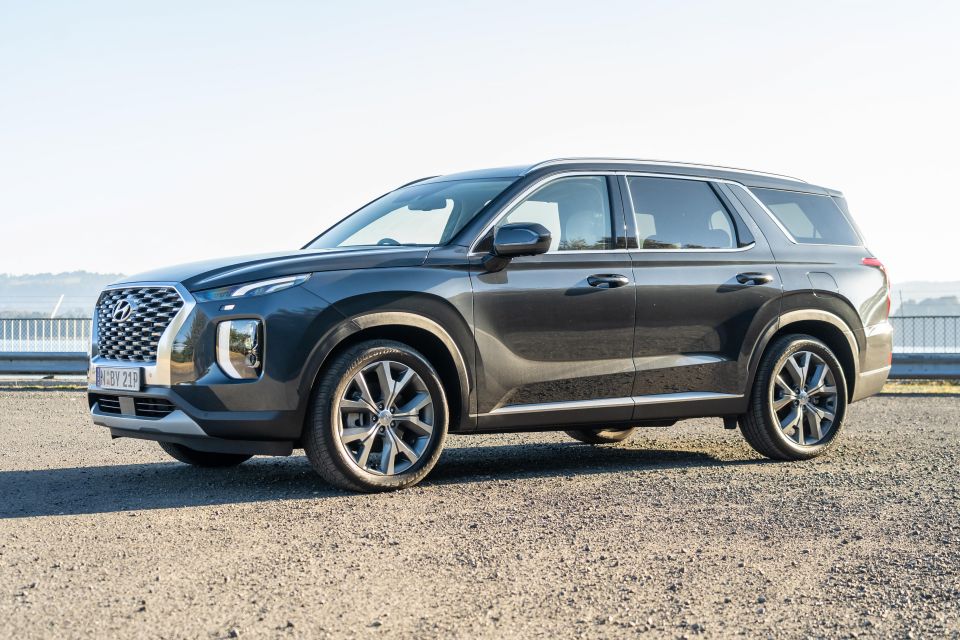
Even the entry-level Palisade comes loaded with equipment.
It rides on 18-inch alloys, and features a huge range of chrome and aluminium trim pieces to help it stand out from the crowd. LED daytime running lights are standard, but they’re paired with halogen headlights.
The cabin of both Palisade trim levels gets 16 cupholders (sixteen!), seven USB ports, and leather trim is standard across the range.
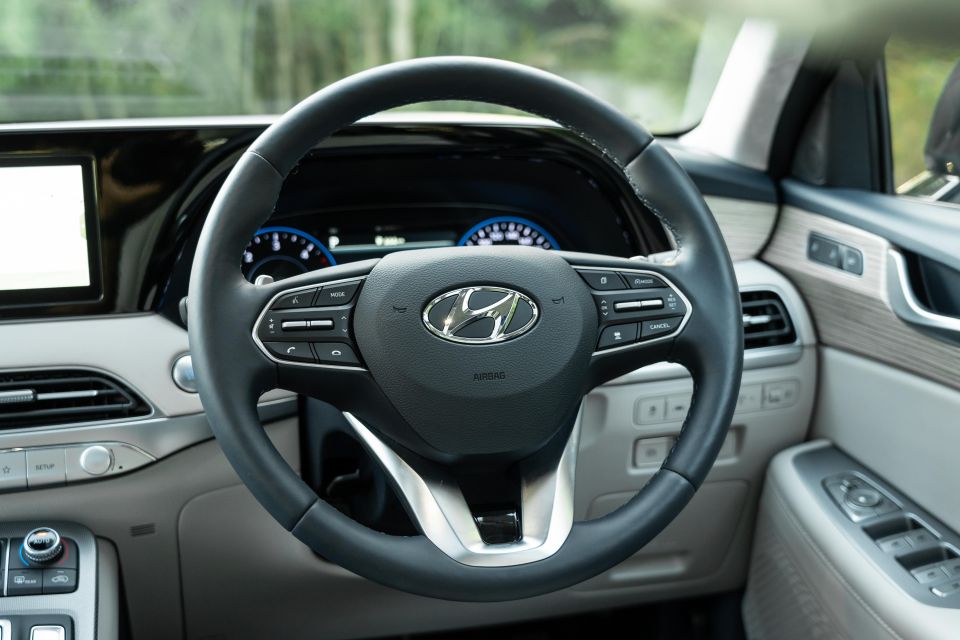
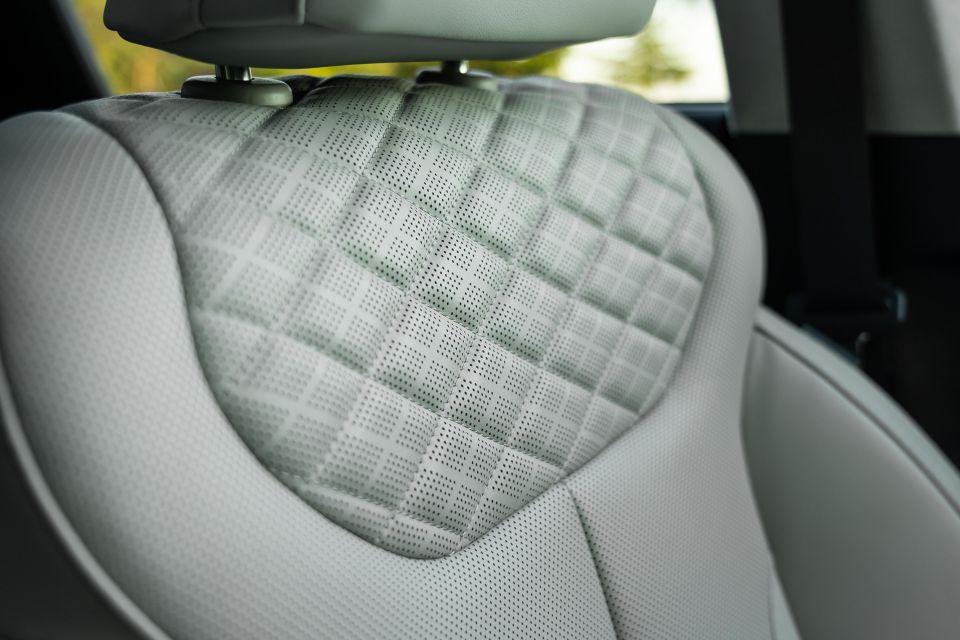
All three rows of seats get their own air vents, and there are three climate control zones: two in the front, one for the rear.
The driver is faced with analogue instruments and a 7.0-inch trip computer display, along with a 10.25-inch infotainment touchscreen with Android Auto, Apple CarPlay, and factory satellite navigation. A 12-speaker sound system is standard.
Given it’s $10,000 more expensive, the Highlander has plenty of extra equipment.
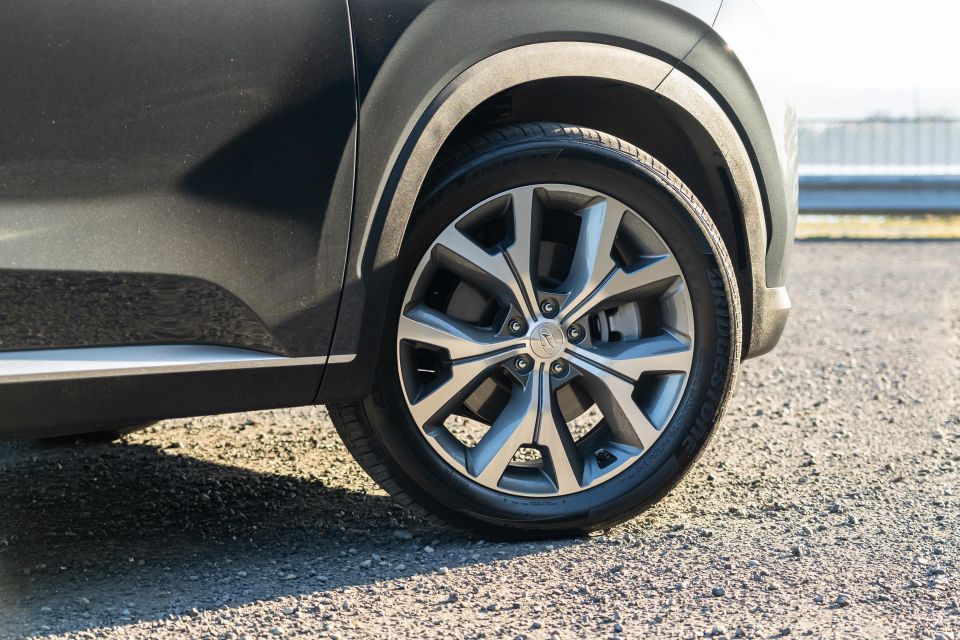
It rides on 20-inch alloy wheels, and subs the disappointing halogen headlights of the base model for LED units. There’s also a powered tailgate.
The seats are trimmed in Nappa leather finished in beige or burgundy, and there’s a head-up display, memory for the driver’s seat, and a dual sunroof.
Buyers of the Highlander can choose between seven- and eight-seat configurations for the interior. The former replaces the second-row bench with two plush captain’s chairs, the latter has a regular three-seat bench in both the second and third rows.
The front seats and second-row captain’s chairs in seven-seat cars are heated and ventilated, the steering wheel is heated, and the headliner is finished in suede.
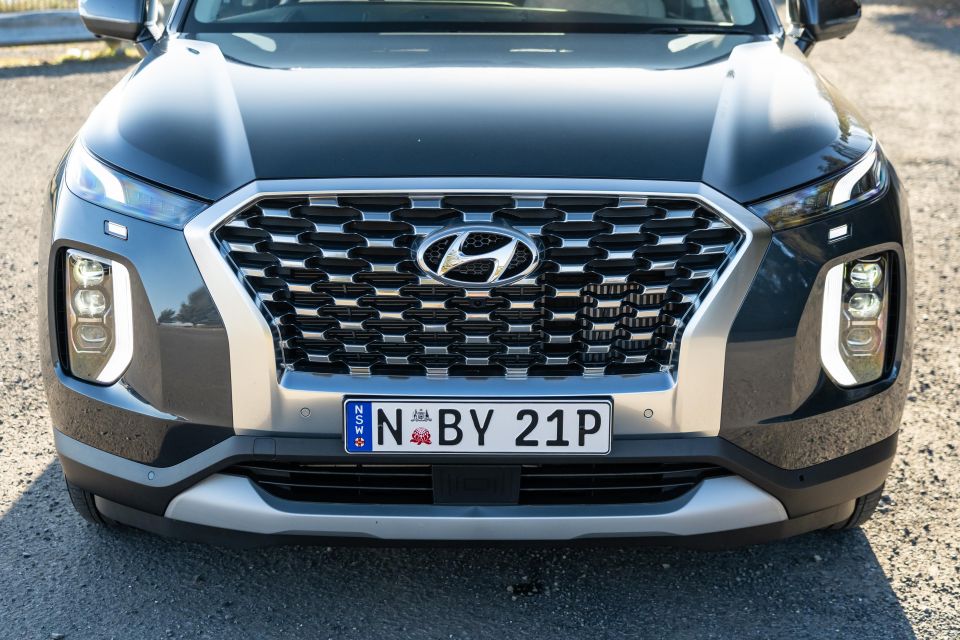
Aimed primarily at the Korean and North American markets, the Palisade doesn’t have a Euro NCAP or ANCAP crash rating.
The American Insurance Institute for Highway Safety (IIHS) awarded the Palisade a Top Safety Pick rating in 2020, with the Hyundai SUV scoring top marks across almost all criteria bar the base model’s headlights and the ease-of-use for child seat anchor points.
Moving to the range-topping Palisade Highlander brings a blind-spot view monitor, allowing owners to see a camera feed of their blind-spot in the instrument binnacle.
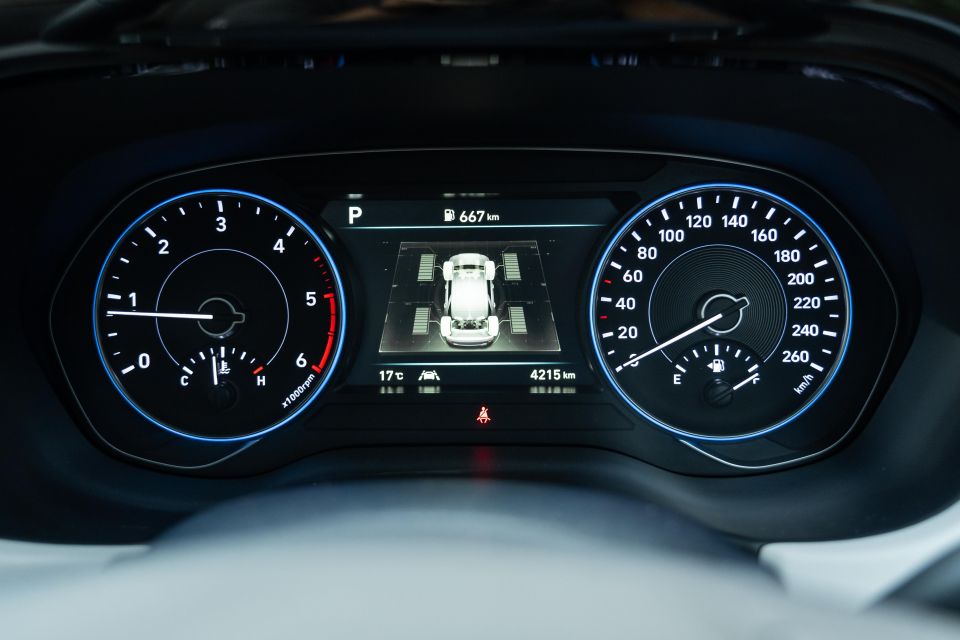
Standard safety equipment atop the standard six airbags in Australia includes:
Hyundai also points out the curtain airbag in the Palisade covers the D-pillar, so third-row occupants are fully protected unlike the smaller Santa Fe.
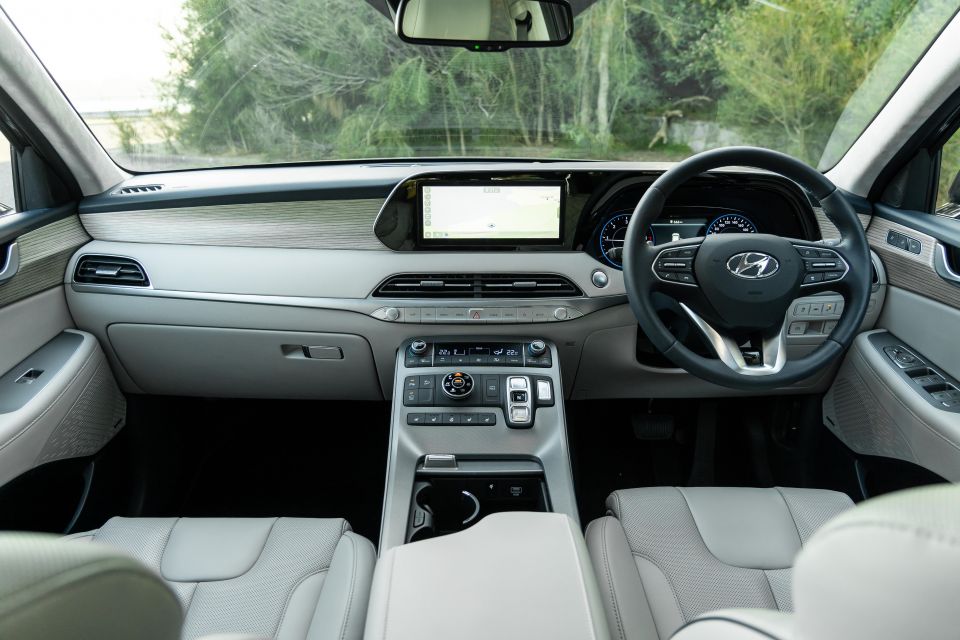
At 4980mm long, 1975mm wide and 1750mm tall, with a 2900mm wheelbase, the Palisade is 295mm longer and 76mm wider than the Santa Fe, previously the largest SUV in the Hyundai stable.
It feels it from behind the wheel. This feels like a car designed for American audiences raised on a steady diet of large SUVs like the Chevrolet Tahoe and Ford Expedition.
That’s not to say the Palisade Highlander isn’t nice. It’s lovely, with high-quality materials and a handsome design that more than justifies the sticker price. The beige trim and woodgrain of our tester looked great, but the burgundy option is even more unique.
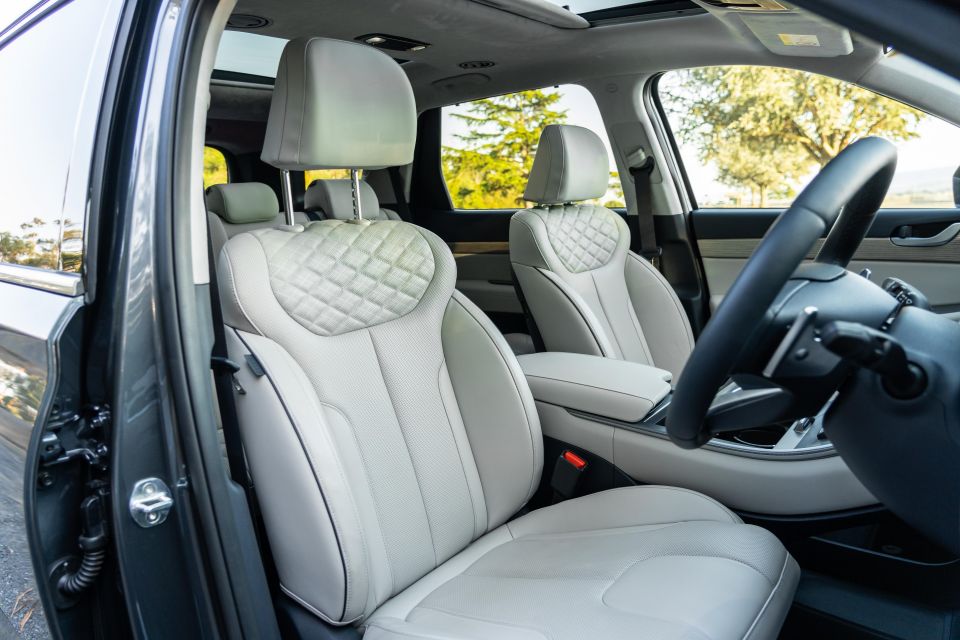
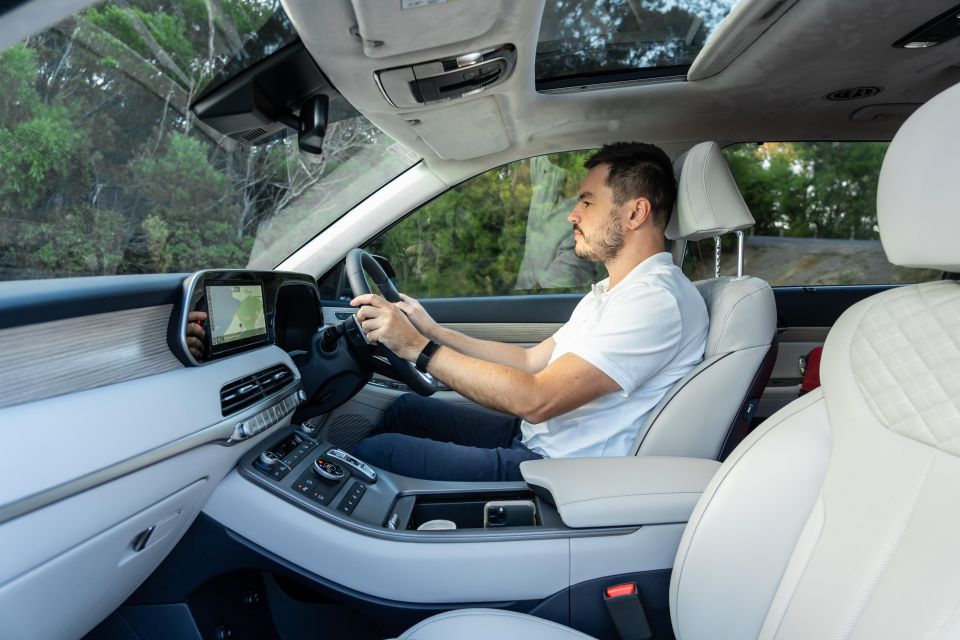
The driver and passenger are faced with an expansive transmission tunnel that rises up to meet the dashboard, and is festooned with chunky buttons.
They’re perfect for parents who don’t want to spend hours searching through a screen for climate controls while they’re trying to turn up The Wiggles, find a bottle beneath the passenger seat, and separate fighting kids in the back seat.
The logic of making the drive mode selector so prominent on the transmission tunnel is questionable, however, given most owners are unlikely to ever bother with anything other than the standard “Smart” setting.
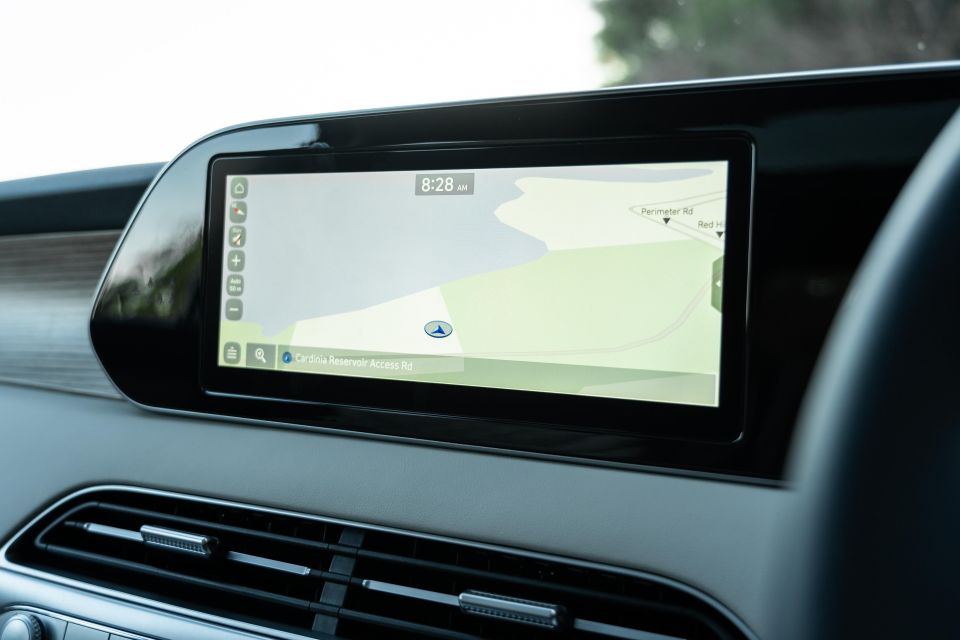
Infotainment comes courtesy of the latest, greatest 10.25-inch infotainment system in the Hyundai world.
With wired smartphone mirroring and factory satellite navigation, it’s loaded with everything you’ll need – but functions hidden in the top left-hand corner of the screen can feel like a bit of a stretch, even if you have long arms.
Thankfully, Hyundai has fitted a proper volume knob and shortcut buttons on the centre console.
Storage spaces are abundant. There’s a giant space beneath the transmission tunnel with a USB plug and 12V socket, an open bin on the tunnel itself with cupholders, space for keys and wallets, and a wireless phone charger.
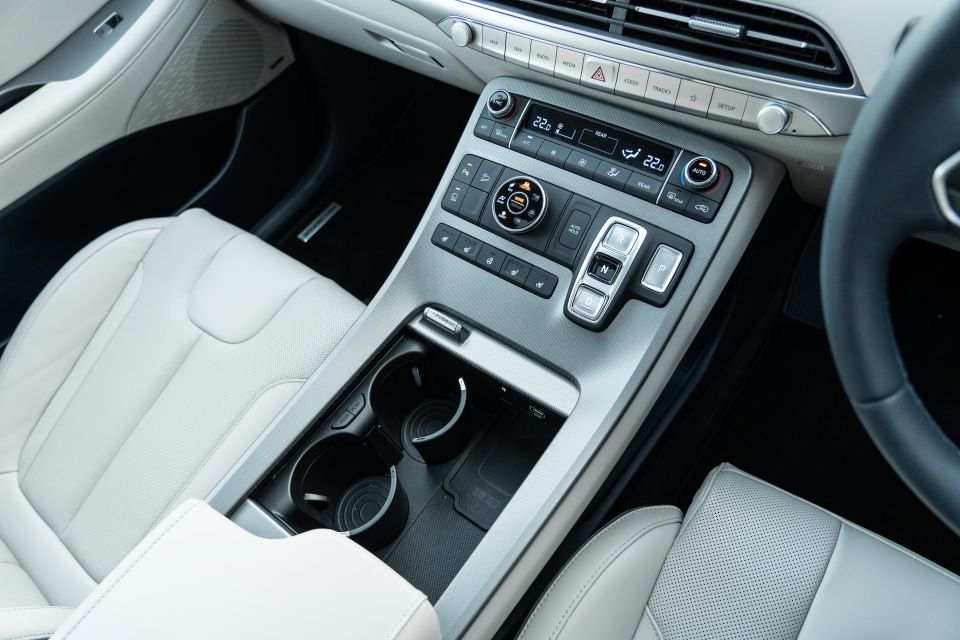
All told there are seven USB ports and 16 cupholders in the cabin, enough to keep the whole cabin charged and hydrated on long trips.
There’s also a neat function allowing the driver to broadcast to the rear seats like an airline captain, in case people in the back row are having trouble hearing… or if the kids are trying hard to ignore what mum and dad have to say.
Space in the second row is huge. Legroom is capacious with the rear seats slid to the rearmost position, to the point where six-seven me can sit behind six-seven me without stress.
Even though the seats are raised, stadium-style, to improve visibility, there’s acres of headroom.
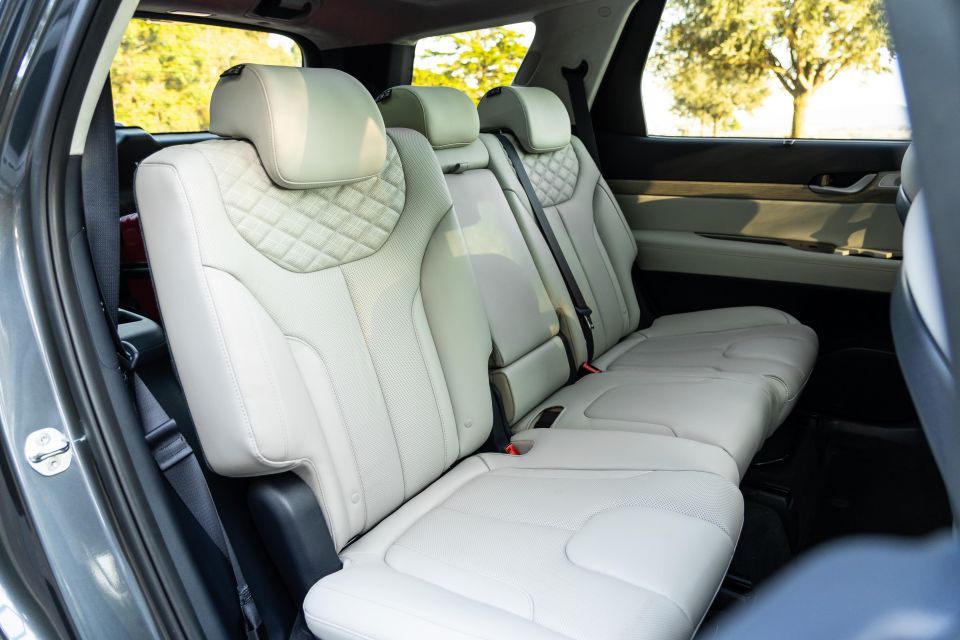


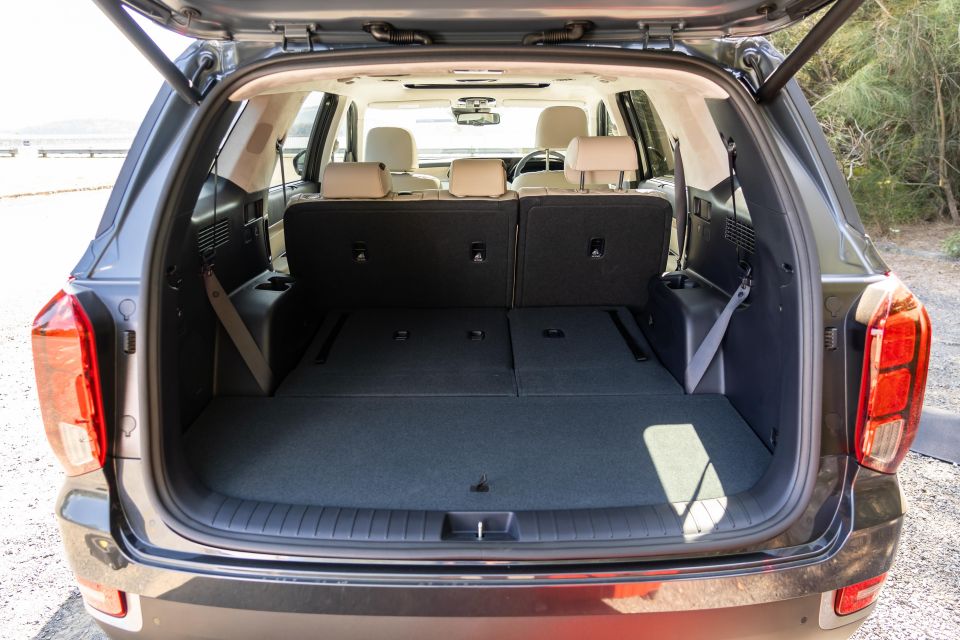
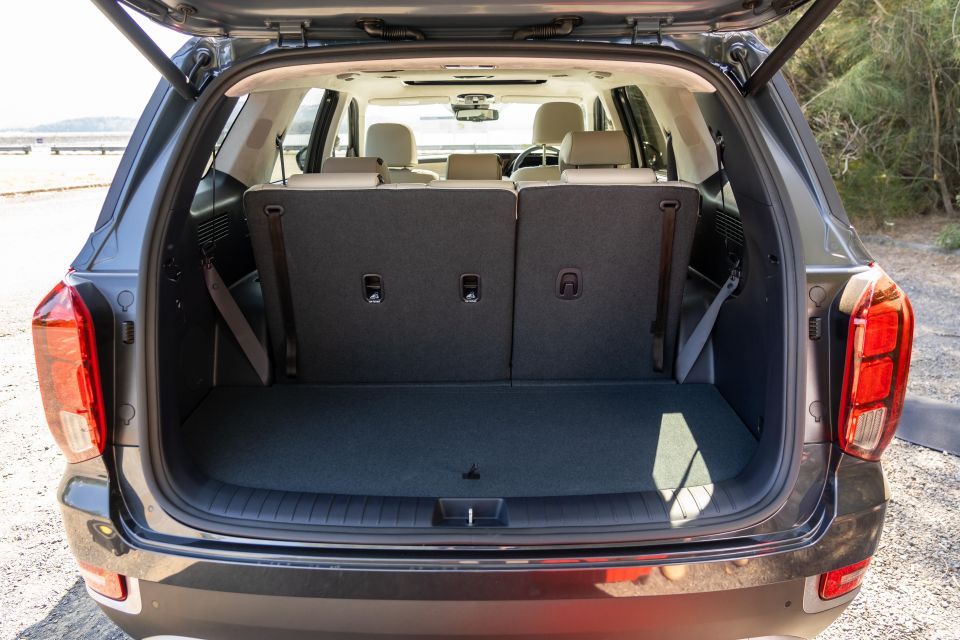
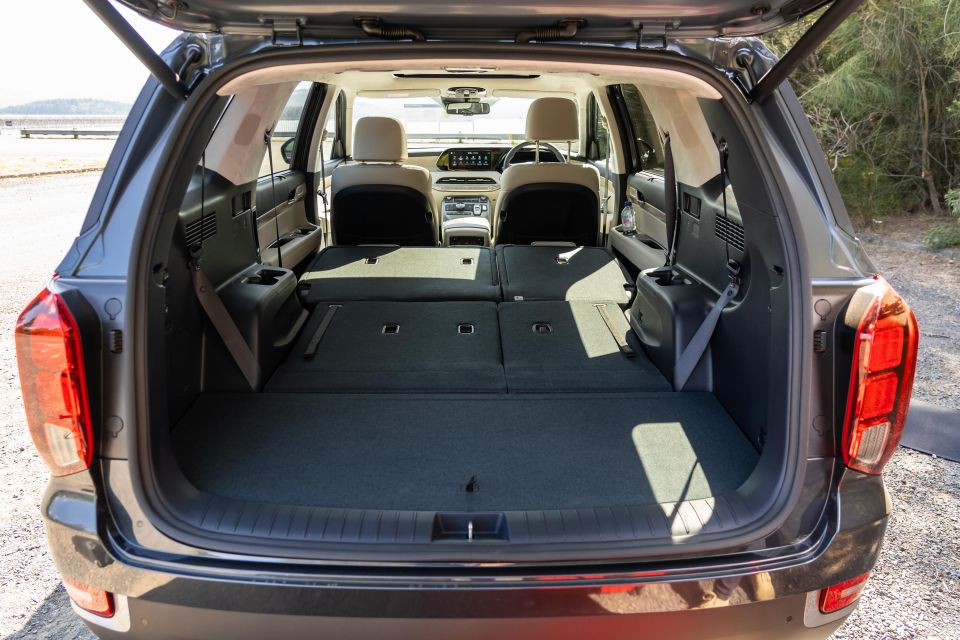
With roof-mounted vents, a fold-down central armrest, USB ports in the front seat backs, and dual cupholders in the doors, there’s very little wrong with the eight-seat Palisade for kids.
Access to the third row is easy thanks to the electrically-folding seat backs and sliding bases that move a handy 220mm. Space back there is still better for kids than adults, but it’s a marked step up on the Santa Fe.
Child seats can be mounted to the outboard third-row seats thanks to top tether and ISOFIX points. All three second-row seats have the same mounting points.
Boot space is 311L with all three rows of seating in place, and 711L with the third row folded.
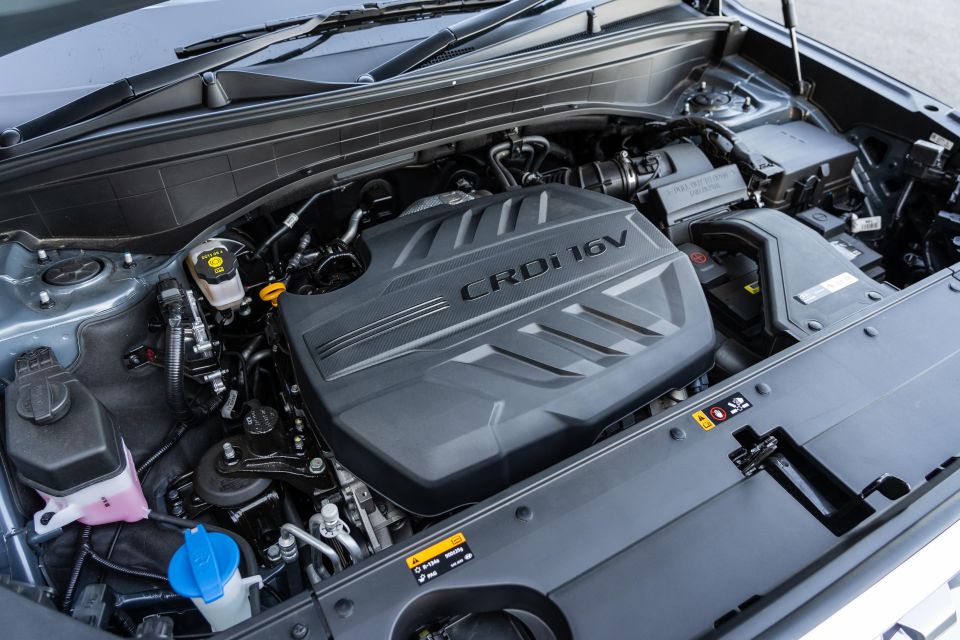
The Palisade Highlander diesel is powered a 2.2-litre four-cylinder turbo-diesel with 147kW of power and 440Nm of torque, mated with an eight-speed automatic and all-wheel drive.
For $4000 less, you can also opt for the 3.8-litre naturally-aspirated V6 with front-wheel drive, developing 217kW and 355Nm and mated to the same eight-speed auto.
Braked towing capacity for the diesel is 2200kg, down on the 2500kg on offer from the Santa Fe.
Claimed fuel economy is 7.3L/100km on the combined cycle.
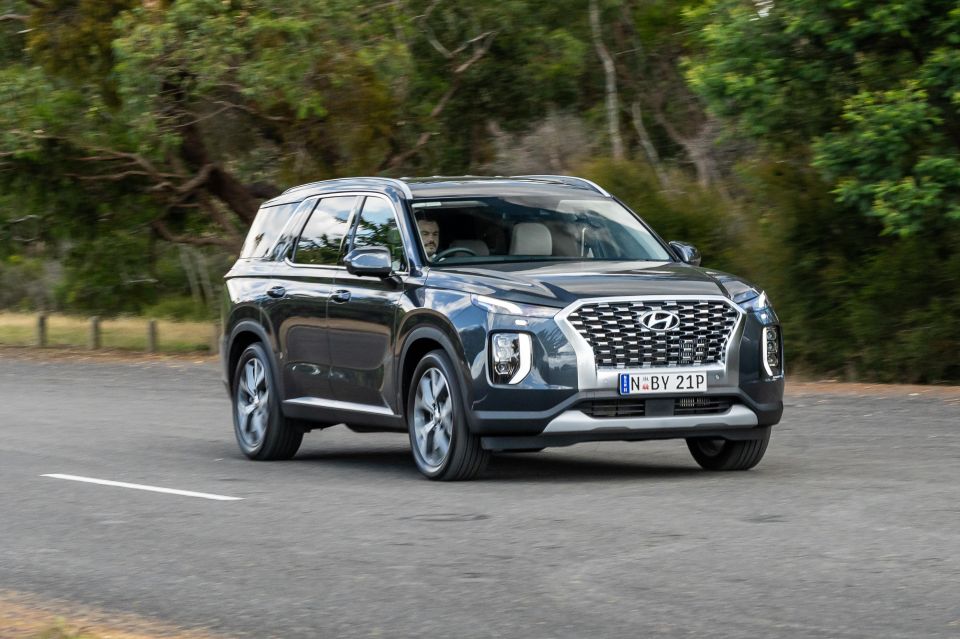
Where expert car reviews meet expert car buying – CarExpert gives you trusted advice, personalised service and real savings on your next new car.
Long periods of time on the highway are what the Palisade lives for.
We’ve done some serious time behind the wheel of the big Hyundai, and it’s a great grand tourer.
Even on 20-inch alloy wheels the Palisade does a great job filtering out patchy rural roads, and body control is excellent over crests and dips. There’s no big car float, the Palisade just gets on with the job.
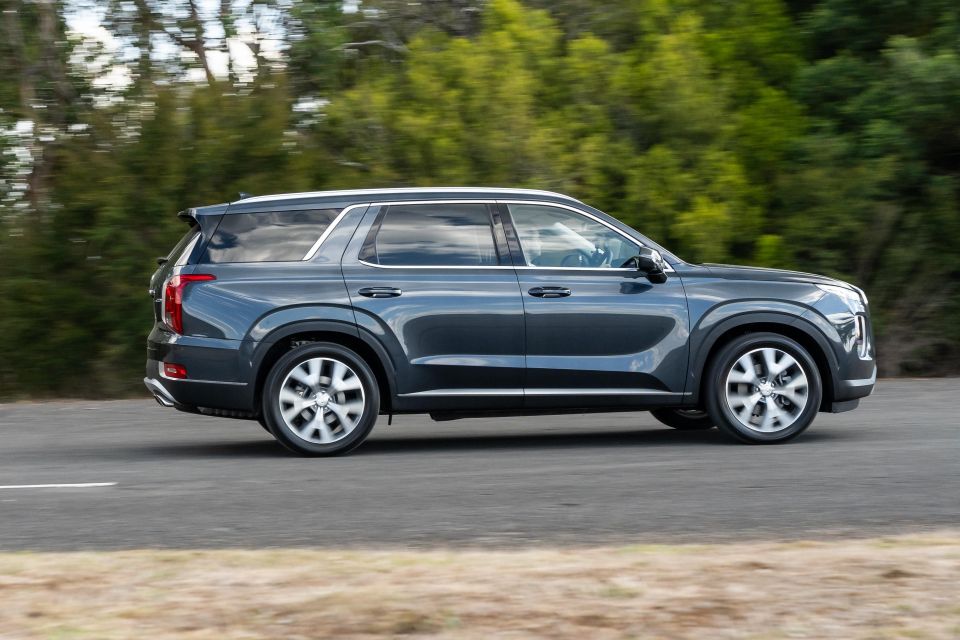
It can be a bit noisy over sharp bumps and expansion joints, but the ride is well sorted in the city as well. Potholes and speed bumps are smoothed over without too much fuss, although the entry-level model on smaller wheels is smoother again.
Despite its considerable size, the Palisade is easy to place in the city. All-round visibility is good from the tall, vast windows, and the surround-view camera makes the furthest reaches of the body easy to spot.
The steering is light at low speeds, and the smooth-moving diesel metes out its torque from low dow in the rev range, so the Palisade doesn’t ever really feel like a gargantuan truck on the school run.
Of the two engines in the Palisade range, the turbo-diesel is definitely the pick. For one, it’s all-wheel drive, which makes it a friendlier beast to pilot on wet roads than the V6. Where the petrol wants to spin its front wheels if you’re in a hurry, the diesel puts its power down without fuss.
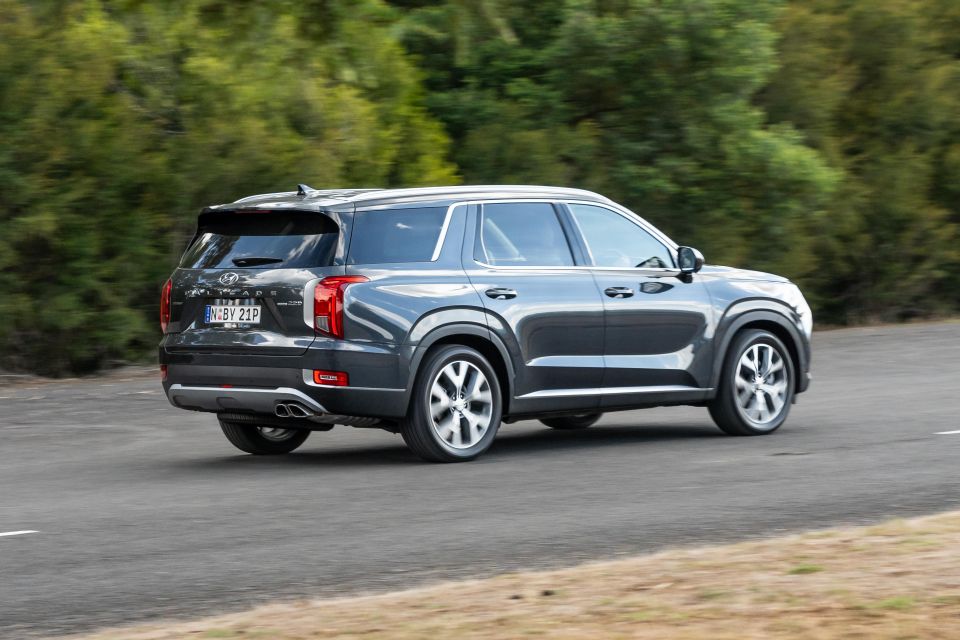
Beyond that, it has more torque than the petrol engine, and doesn’t need to work as hard to shift the near-two-tonne Palisade.
Lean on the throttle and it picks up more readily, and the eight-speed transmission doesn’t need to shuffle down the gears when the driver demands more performance. It’s also impressively refined.
Loaded with two people and their kit it feels adequate, loaded with eight people and bags it might feel slightly underdone. This is an engine that gets the job done, but it doesn’t have an abundance of power or torque.
Although there’s a slightly gruff diesel rumble when you really lean on it, it’s a silent partner at highway speeds. The front of the cabin is impressively hushed at 110km/h, although the rear can get a little bit noisy on coarse-chip surfaces.
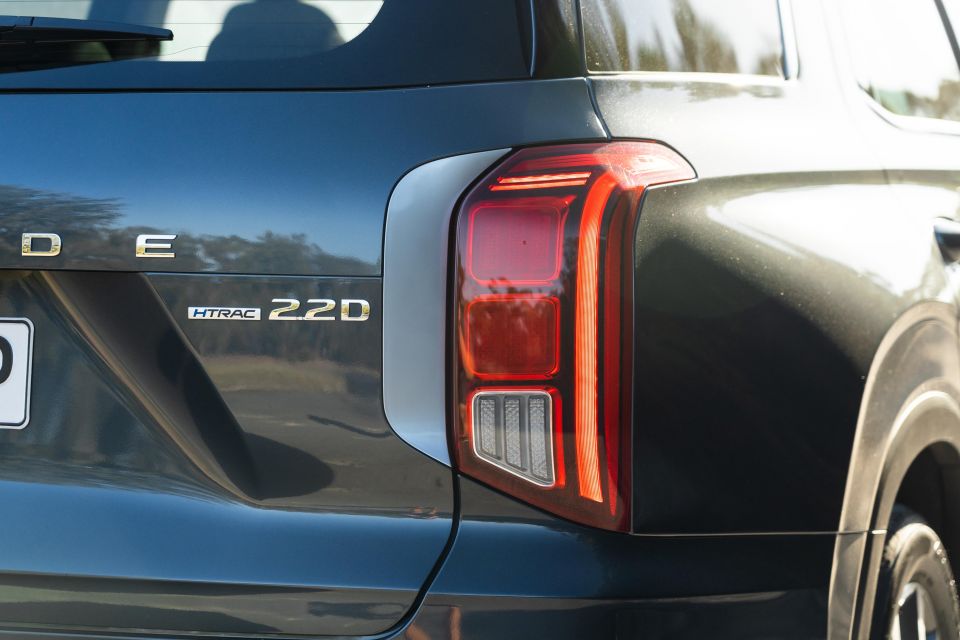
The Palisade is covered by Hyundai’s five-year, unlimited-kilometre new vehicle warranty with roadside assistance for the same period and lifetime capped-price servicing.
Maintenance is required every 12 months or 15,000km.
The first four services in diesel models each cost $469.
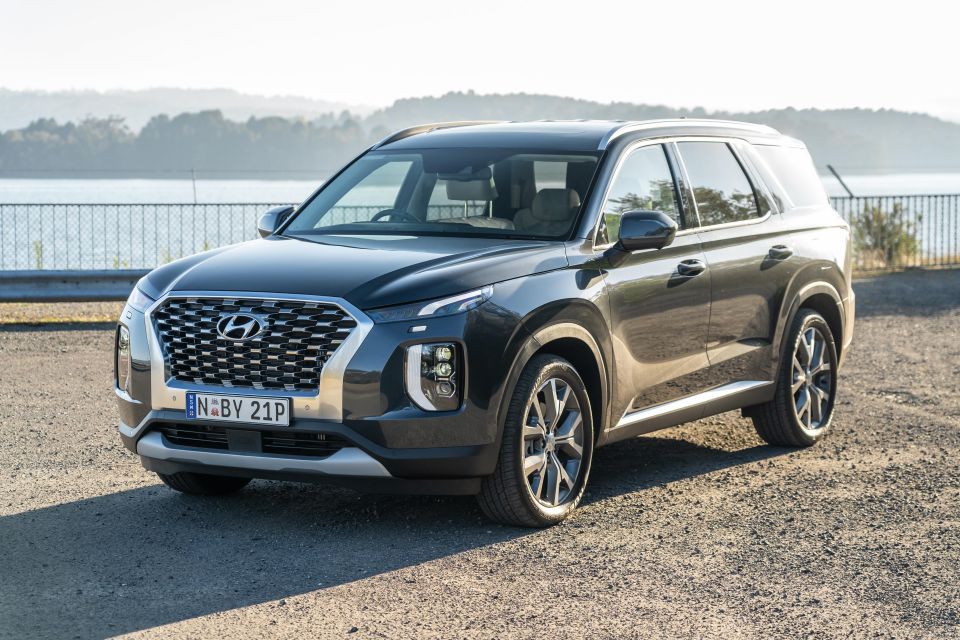
The Palisade is definitely at its best at the top end of the range.
The diesel engine is the smart buy unless your only focus is the upfront purchase price, given it uses less fuel and has more performance than its petrol, and the Highlander adds plenty of luxury equipment for a reasonable extra charge.
It still can’t match the a people mover like the Kia Carnival for outright practicality, but the Palisade is arguably the best way to carry eight people around if you simply must have an SUV.
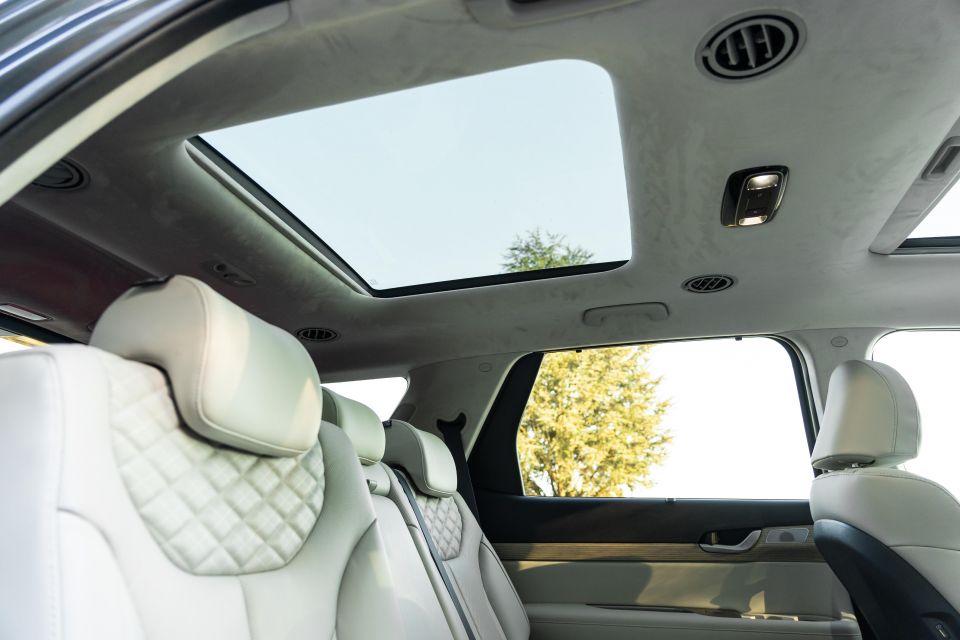
Click the images for the full gallery
MORE: Hyundai Palisade news, reviews, comparisons and videos
Where expert car reviews meet expert car buying – CarExpert gives you trusted advice, personalised service and real savings on your next new car.
Scott Collie is an automotive journalist based in Melbourne, Australia. Scott studied journalism at RMIT University and, after a lifelong obsession with everything automotive, started covering the car industry shortly afterwards. He has a passion for travel, and is an avid Melbourne Demons supporter.


Max Davies
2 Months Ago


Matt Campbell
2 Months Ago
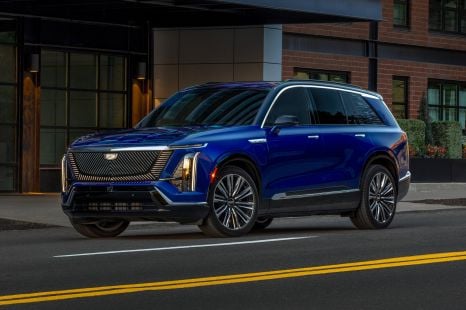

William Stopford
1 Month Ago
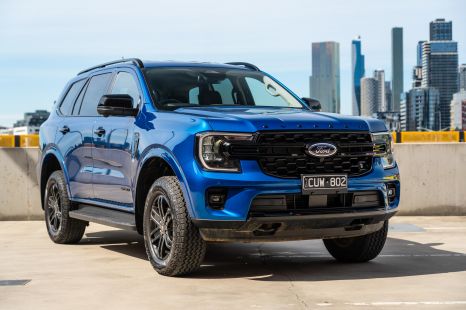

Josh Nevett
1 Month Ago
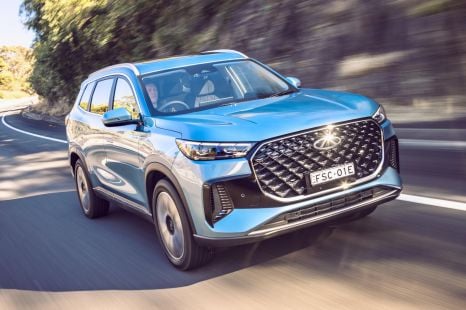

Max Davies
28 Days Ago
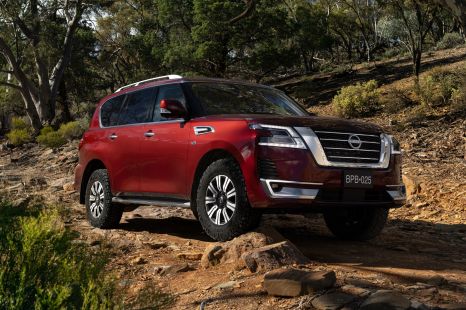

CarExpert.com.au
17 Days Ago